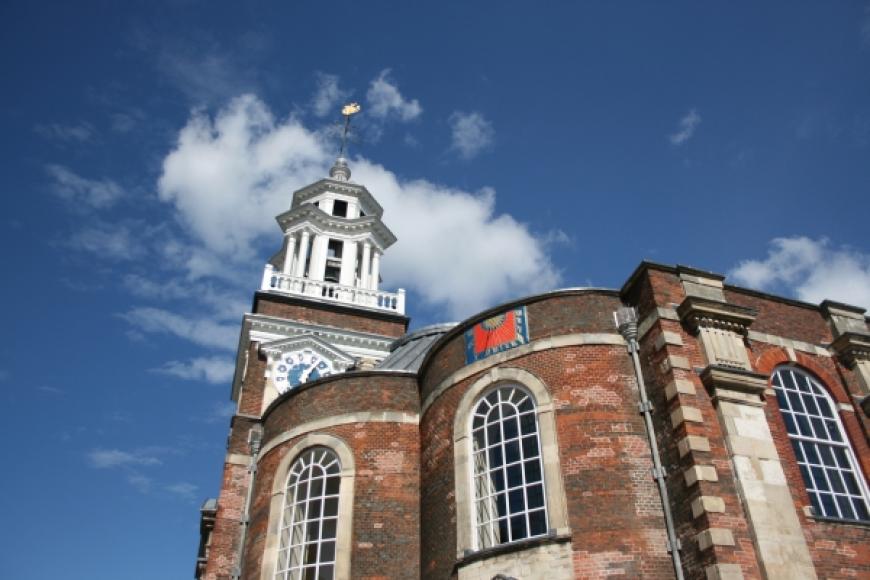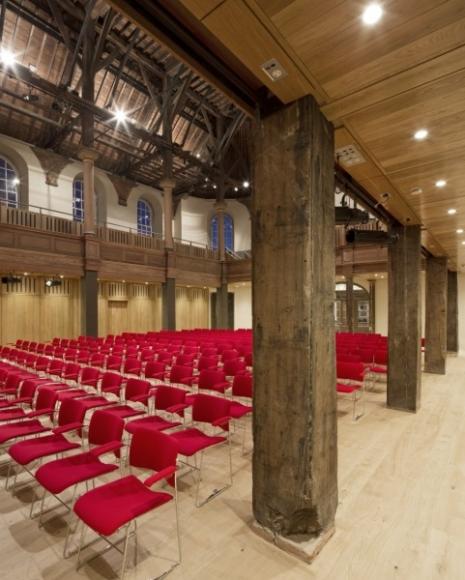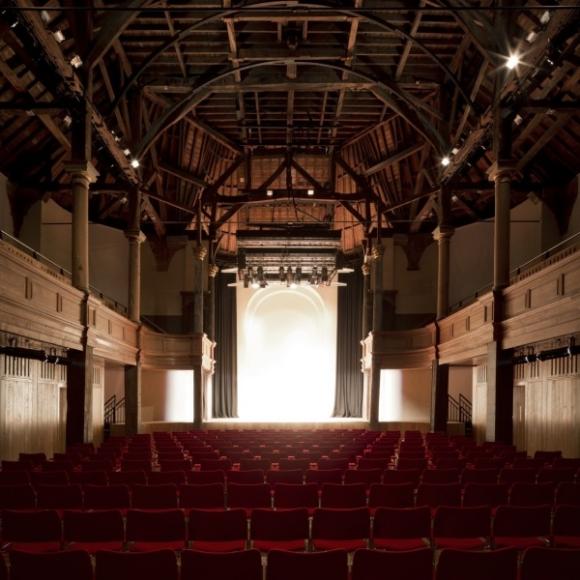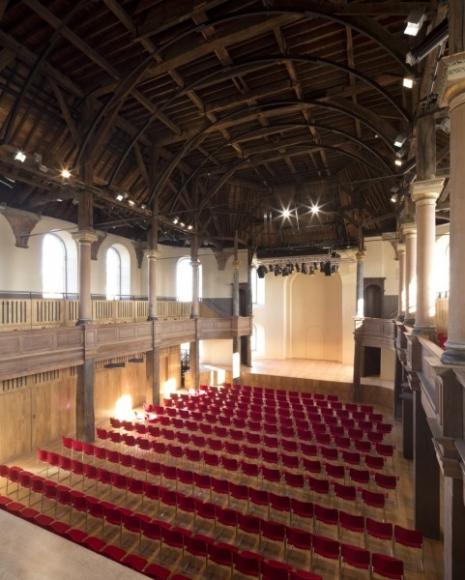St George's Theatre
St George’s Theatre is the conversion of a deconsecrated chapel into a professional theatre. Commissioned in 1714, the chapel was modelled on Sir Christopher Wren’s St. Clement Danes by architects John Price of Richmond. It is recognised as one of the finest examples of Baroque Church architecture outside of London, built of red brick with ashlar dressings on a stone plinth course, with a clock tower. After many years of service as a chapel, St. George’s fell into disrepair and was eventually deconsecrated in 1953. Despite being listed Grade I, it faced demolition. The Chapel eventually discovered a new life and was converted into a theatre and performing arts centre in 1972. However, due to severe structural defects, the theatre was forced to close in 2006. Its deteriorating state resulted in the chapel being declared ‘at risk’ by both English Heritage and Theatres Trust. Great Yarmouth Borough Council eventually secured funding and Hopkins Architects were appointed for a £4m refurbishment to sympathetically restore and transform the building into a modern theatre, which reopened in February 2013. The refurbishment not only restored the fabric of the building, but also made significant improvements to the access, bathrooms, stage and back of house facilities. The main door to the theatre retains its Georgian fanlight and much of the original glass remains elsewhere. The lath and plaster ceiling has gone, leaving the rafters of the barrel-shaped roof exposed. There are galleries at either side of the building and another at the rear which originally contained the organ. The first level of the gallery has two tiers for seating (pillars affect some sightlines) and the rear gallery contains the lighting box. The gallery is accessed by a pair of curved stairs in the foyer. On the ground level, the floor is flat and the seating is moveable/stackable, allowing a variety of seating arrangements and uses. The ground floor galleries on each side contain bathrooms, dressing rooms and storage rooms, and additional exits. The stage is raised and is roughly semi-circular within the area of the former alter. There is no proscenium arch or fly tower. A separate single storey pavilion was constructed to the south of the chapel containing the front of house facilities, including a box office, bar/cafe, toilets and office.
- 1972 - 2006: Theatre
- 2006 - 2013: Dark
- 2013 : Theatre, continuing
Further details
- 1714 Design/Construction: As St George's ChurchJohn Price Of Richmond- Architect
- 1972 - 2006 Use: Theatre
- 1973 Owner/Management: Great Yarmouth Borough Council, owner, continuing
- 1987 Design/Construction: New foyer and bar area constructed (architect unknown)
- 2006 - 2013 Use: Dark
- 2010 Owner/Management: St George's Theatre Trust, operator, continuing
- 2012 - 2013 Alteration: £4m refurbishmentHopkins Architects- Architect
- 2013 Use: Theatre, continuing
- CapacityOriginalDescription240
- CapacityCurrentDescription300Comment2013
- ListingI



